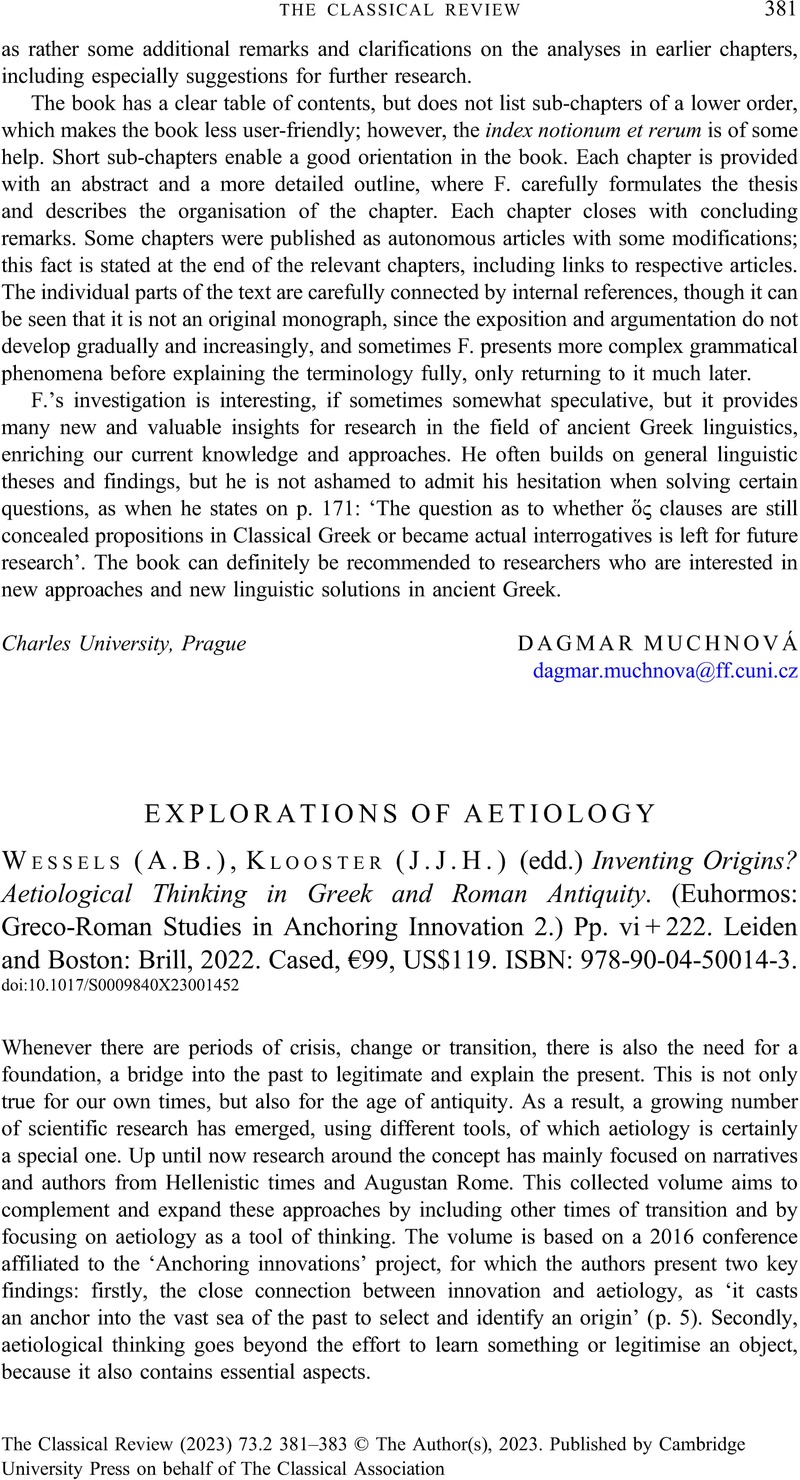No CrossRef data available.
Article contents
EXPLORATIONS OF AETIOLOGY - (A.B.) Wessels, (J.J.H.) Klooster (edd.) Inventing Origins? Aetiological Thinking in Greek and Roman Antiquity. (Euhormos: Greco-Roman Studies in Anchoring Innovation 2.) Pp. vi + 222. Leiden and Boston: Brill, 2022. Cased, €99, US$119. ISBN: 978-90-04-50014-3.
Review products
(A.B.) Wessels, (J.J.H.) Klooster (edd.) Inventing Origins? Aetiological Thinking in Greek and Roman Antiquity. (Euhormos: Greco-Roman Studies in Anchoring Innovation 2.) Pp. vi + 222. Leiden and Boston: Brill, 2022. Cased, €99, US$119. ISBN: 978-90-04-50014-3.
Published online by Cambridge University Press: 30 June 2023
Abstract
An abstract is not available for this content so a preview has been provided. Please use the Get access link above for information on how to access this content.

- Type
- Reviews
- Information
- Copyright
- Copyright © The Author(s), 2023. Published by Cambridge University Press on behalf of The Classical Association



